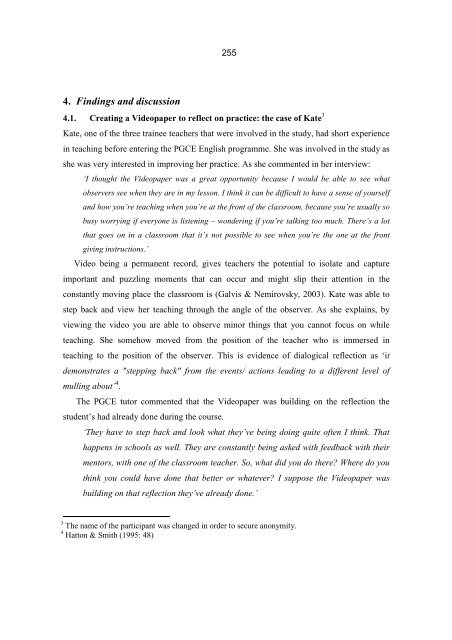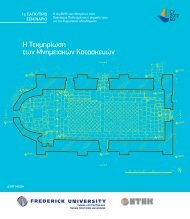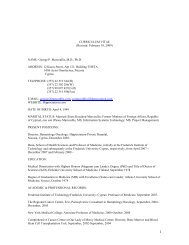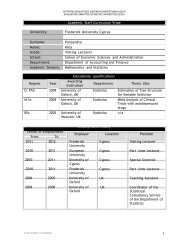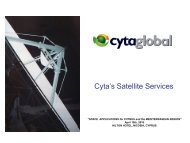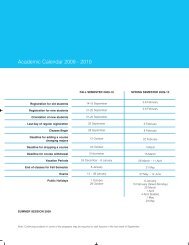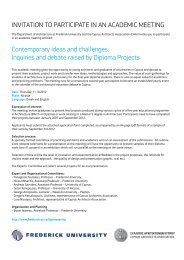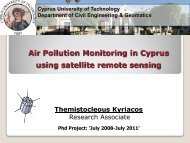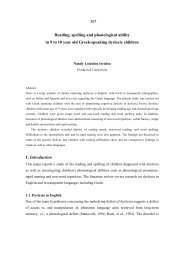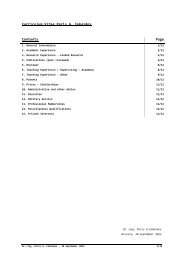Videopaper and teacher education Student teachers create ...
Videopaper and teacher education Student teachers create ...
Videopaper and teacher education Student teachers create ...
You also want an ePaper? Increase the reach of your titles
YUMPU automatically turns print PDFs into web optimized ePapers that Google loves.
4. Findings <strong>and</strong> discussion<br />
255<br />
4.1. Creating a <strong>Videopaper</strong> to reflect on practice: the case of Kate 3<br />
Kate, one of the three trainee <strong>teacher</strong>s that were involved in the study, had short experience<br />
in teaching before entering the PGCE English programme. She was involved in the study as<br />
she was very interested in improving her practice. As she commented in her interview:<br />
‘I thought the <strong>Videopaper</strong> was a great opportunity because I would be able to see what<br />
observers see when they are in my lesson. I think it can be difficult to have a sense of yourself<br />
<strong>and</strong> how you’re teaching when you’re at the front of the classroom, because you’re usually so<br />
busy worrying if everyone is listening – wondering if you’re talking too much. There’s a lot<br />
that goes on in a classroom that it’s not possible to see when you’re the one at the front<br />
giving instructions.’<br />
Video being a permanent record, gives <strong>teacher</strong>s the potential to isolate <strong>and</strong> capture<br />
important <strong>and</strong> puzzling moments that can occur <strong>and</strong> might slip their attention in the<br />
constantly moving place the classroom is (Galvis & Nemirovsky, 2003). Kate was able to<br />
step back <strong>and</strong> view her teaching through the angle of the observer. As she explains, by<br />
viewing the video you are able to observe minor things that you cannot focus on while<br />
teaching. She somehow moved from the position of the <strong>teacher</strong> who is immersed in<br />
teaching to the position of the observer. This is evidence of dialogical reflection as ‘it<br />
demonstrates a "stepping back" from the events/ actions leading to a different level of<br />
mulling about’ 4 .<br />
The PGCE tutor commented that the <strong>Videopaper</strong> was building on the reflection the<br />
student’s had already done during the course.<br />
‘They have to step back <strong>and</strong> look what they’ve being doing quite often I think. That<br />
happens in schools as well. They are constantly being asked with feedback with their<br />
mentors, with one of the classroom <strong>teacher</strong>. So, what did you do there? Where do you<br />
think you could have done that better or whatever? I suppose the <strong>Videopaper</strong> was<br />
building on that reflection they’ve already done.’<br />
3 The name of the participant was changed in order to secure anonymity.<br />
4 Hatton & Smith (1995: 48)


